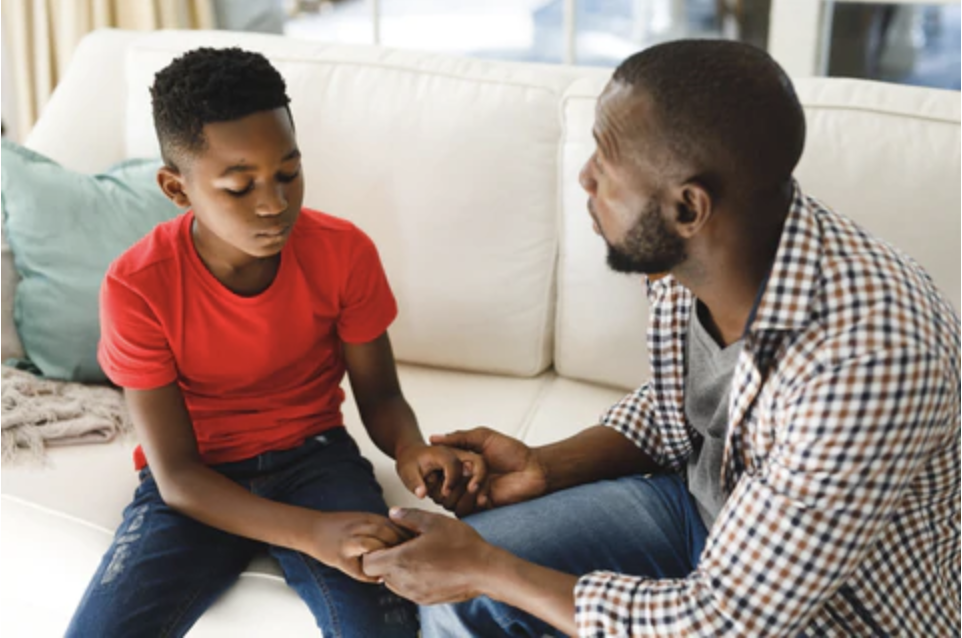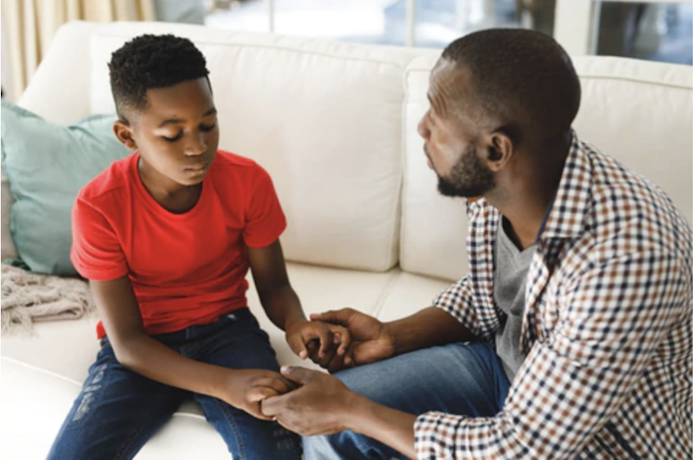
Our schools have less security than casinos and banks yet it is our children who, by far, are the most invaluable. Something has to change here.
Our teachers have become the front line of a handicapped war, sacrificing their lives to save our children. Something has to change here.
The US has more school-related gun shootings than any other country. Something has to change here.
Our country is clearly divided on gun control... and yet, another important facet needs calling out. Emotional regulation and mental health.
See, the 18-year-old shooter was a victim too. Years of bullying at school. Growing up in an unstable home. When people hurt … when they don’t have the help and resources they need ... they cause hurt.
Children who feel unsafe, some of them shut down and turn that pain inward. This is why we see suicide.
Children who feel unsafe, some of them fight and turn that pain toward others. And sadly we witness 19 children and 2 teachers taken far too soon.
This is why orienting our children to their emotions is so incredibly powerful. We can help them notice what they feel and guide them with tools for healthy expressions of those sensations.
So that when they feel out of control, they have the circuits to not act out of control.
So that when they have a want and need, they feel supported enough to call it out.
Imagine what would happen if children learned these skills. They could regulate when things felt hard. They could ask for help. They would know that when they are struggling, there is nothing wrong or bad about them. They could trust that they have the resources they need, whether it be a non-judgmental ear, an open heart, or mental health support.
This requires there to be the presence of one stable, secure adult. The need for attachment is encoded in our DNA. Every time a caregiver responds to their child’s physical and emotional needs, it creates safety pathways within the child’s brain.
This means that when they are struggling, we don’t banish them to isolation to process alone.
This means that when they behave in challenging ways, we don’t hurt them to teach them.
Talking To Your Child About School Shootings
In different ways, we will have conversations with our children about the tragedy that took place. We will do our best to prepare them, to arm our babies with love and knowledge and safety. As we do so, we can follow some of these tips.
1. Process your own emotions first. Take a moment to notice how you feel and be with it. Cry if you need it. Pray if you need it. Sit in silence if you need it. In taking time to process your own emotions first, you create space to be with your child’s raw expressions when they happen.
2. Listen to your child’s thoughts and emotions. Without attempting to fix or control it or to reassure the fear away, listen to your child as they share what they know and how they feel, then validate it.
3. Model and share your feelings. Acknowledge how you feel using “I feel statements” and share your thoughts candidly. For our older kids especially, it can also be helpful to say things like, “from what I have read …” or “my belief is …” and give space for your child to create their own thoughts.
4. Co-regulate. Your child’s nervous system mirrors your own. Practice breathing to help with anxious thoughts. Draw a heart on your child’s hand on school days to anchor them into connection. Create scripted stories to process the emotional and logical facets of these tragic events. Together, notice and name the feeling sensations you notice and create outlets for regulation.
5. Guide the conversations. Have the conversations you want to have in the ways that feel most aligned with you and your child’s relationship. Depending on your child’s age and developmental level you may choose how much information to disclose and how to best disclose it. No matter what you choose, just do it with authenticity and in age-appropriate ways.
6. Discuss safety plans. What are the safety plans for home? For school? Addressing the tough stuff with our children helps them feel more secure and connected. It also helps them feel in control, which means they move out of survival mode (the same mode that activates their nervous system to fight, flight, freeze, or fawn in the face of adversity), and into a reflection and problem-solving mode.
7. Discuss mental health. Make this a part of your conversation to decrease the stigma of mental health challenges. Concrete explanations help children better understand. Teach your child how to be a friend to the kid who sits alone. To speak up for the bullied.
Share with them the power of asking for help. Point them to resources. NAMI offers “Meet Little Monsters” which is a mental health coloring book. There are also apps to help children and teens who are experiencing anxiety such as Breathe, Think, Do with Sesame by Sesame Street and Headspace.
Additional Resources
Resources for Talking to Children
- Common Sense Media
- Very Well Family
- NASP Tips
- National Center for School Crisis and Bereavement Guidelines
- Ready.gov : guidelines for if you find yourself in a shooter situation
- NCTSN guidelines : for helping youth after a shooting
Uvalde Support Resources
- Victims First GoFundMe Fundrasier
- Blood Donations
- Robb School Memorial Fund Donate at any of the First State Bank branches. Mail checks to 200 E. Nopal St., Uvalde, TX 78801
Parent Action Resources
- Moms Demand Action
- Protect Our School from Gun Violence
- Unicef #ENDviolence
- A Guilde to Calling Your Officials
- APA Managing Your Own Distress
Youth Mental Health Resources
- National Suicide Prevention Lifeline : Visit the site call 1-800-273-TALK (8255)
- Crisis Text Line: Visit the site or text “START” to 741-741
- Teens Against Bullying: Created by and for teens, this website is a place for middle and high school students to find ways to address bullying, take action, be heard, and own an important social cause.
- StopBullying.Gov: This website offers resources specifically for teens to prevent bullying in their schools and communities and provides resources for those being bullied.
- Gay, Lesbian & Straight Education Network: GLSEN is the leading national education organization focused on ensuring safe schools for all students. This website provides resources on finding GSA Chapters, and tools on how to establish or re-establish a GSA.
- American Academy of Child and Adolescent Psychiatry: This resource center includes videos, ways to get help, and advocacy campaigns.
- National Alliance on Mental Health: Find resources for youth, including information on managing your mental health in college and making friends.
- Mindfulness for Teens: This website has resources to help teens use mindfulness to handle stress and includes apps to practice meditation and guided mediation recordings.
- Teen Mental Health: Geared towards teenagers, this website provides learning tools on a variety of mental illnesses, videos, and resources for friends.
- Reach Out: This website provides information on specific mental health disorders, as well as resources to help teens make safe plans when feeling suicidal, and helpful tips on how to relax.
Parent Mental Health Resources
- National Suicide Prevention Lifeline Call 1-800-273-TALK (8255); En español 1-888-628-9454
- Use Lifeline Chat on the web.
- Crisis text line. Text “HELLO” to 741741
- Substance Abuse and Mental Health Services Administration (SAMHSA): For general information on mental health and to locate treatment services in your area, call SAMHSA's National Helpline at 1-800-662-HELP (4357).
- Mental Health Resources (MHR)
- This nonprofit provides community-based mental health services to adults, especially those suffering medical, social or substance-related comorbidities.
- National Alliance on Mental Illness (NAMI) — LGBTQ
- The National Alliance on Mental Illness GLBT resources page contains articles, videos, publications, research and links to prominent organizations about GLBT mental health.
- Bereaved Parents of the USA provides a safe space for parents and families in mourning to connect, share stories, and learn how to rebuild their lives with support and resources for grieving parents.
Now is a time for action, both big and small. It starts with us, in our hearts, our homes, and our communities.
Uvalde, Texas, our heart is with you.















